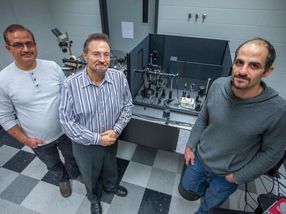Bioceros awarded GO EFRO grant in consortium led by Synthon
Bioceros BV announced that it participates in the ACCESS project consortium led by Synthon, which has been awarded a grant within the GO EFRO program. The budget of almost €1 million is available for the development of improved antibody manufacturing systems. Other partners in this consortium are IBIS Technologies BV, Infors Benelux BV and Wageningen University (The Netherlands).
Louis Boon, CSO of Bioceros, said: "This collaboration builds on Bioceros’ capabilities in cell line generation and antibody manufacturing, where we consistently produce monoclonal antibodies at titers of multiple grams per liter in bioreactors. The consortium with its broad expertise will further integrate cell line generation and process development to reduce development timelines. I look forward to a fruitful collaboration.”
Most read news
Other news from the department business & finance

Get the life science industry in your inbox
By submitting this form you agree that LUMITOS AG will send you the newsletter(s) selected above by email. Your data will not be passed on to third parties. Your data will be stored and processed in accordance with our data protection regulations. LUMITOS may contact you by email for the purpose of advertising or market and opinion surveys. You can revoke your consent at any time without giving reasons to LUMITOS AG, Ernst-Augustin-Str. 2, 12489 Berlin, Germany or by e-mail at revoke@lumitos.com with effect for the future. In addition, each email contains a link to unsubscribe from the corresponding newsletter.
Most read news
More news from our other portals
See the theme worlds for related content
Topic world Antibodies
Antibodies are specialized molecules of our immune system that can specifically recognize and neutralize pathogens or foreign substances. Antibody research in biotech and pharma has recognized this natural defense potential and is working intensively to make it therapeutically useful. From monoclonal antibodies used against cancer or autoimmune diseases to antibody-drug conjugates that specifically transport drugs to disease cells - the possibilities are enormous

Topic world Antibodies
Antibodies are specialized molecules of our immune system that can specifically recognize and neutralize pathogens or foreign substances. Antibody research in biotech and pharma has recognized this natural defense potential and is working intensively to make it therapeutically useful. From monoclonal antibodies used against cancer or autoimmune diseases to antibody-drug conjugates that specifically transport drugs to disease cells - the possibilities are enormous





















































